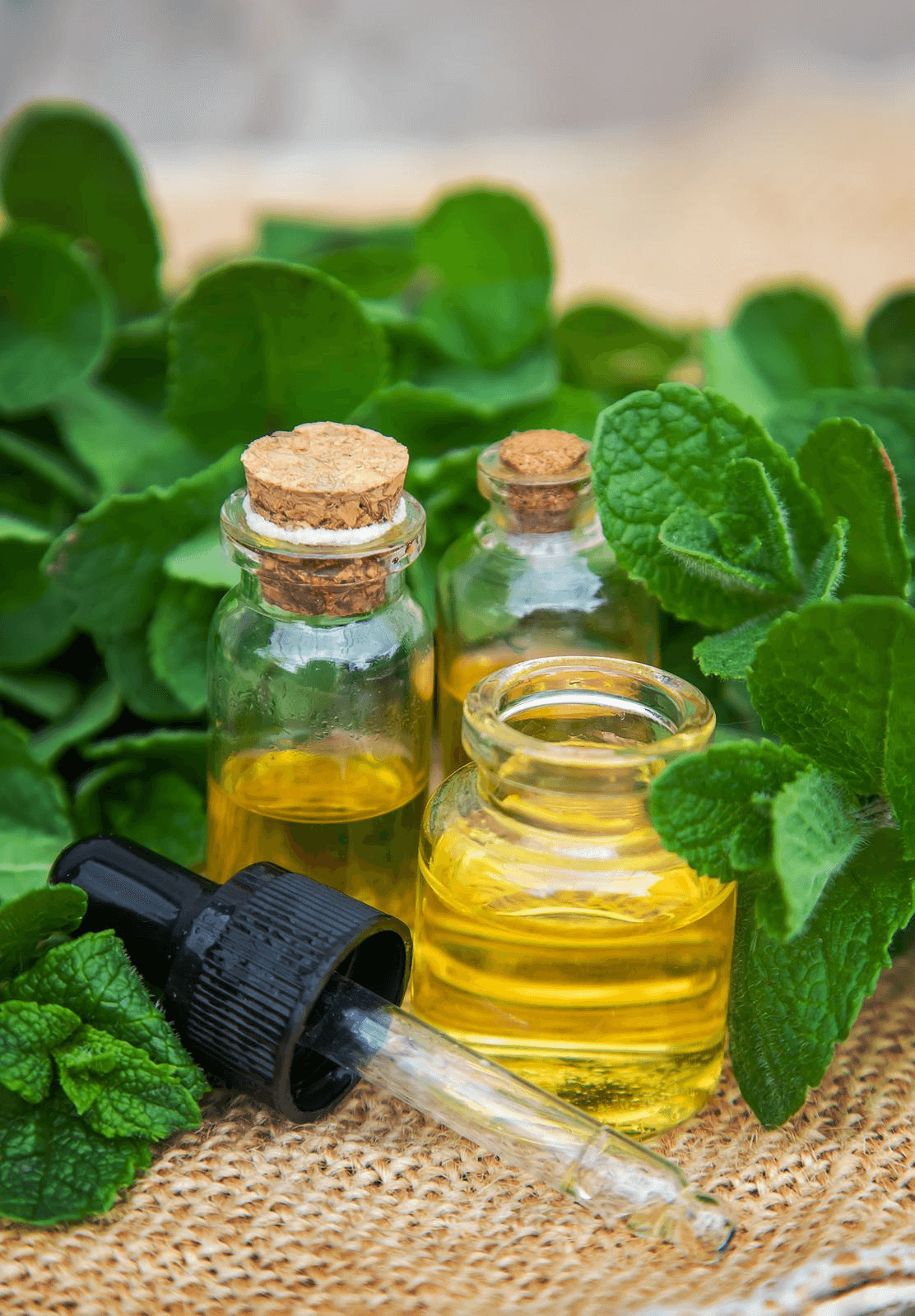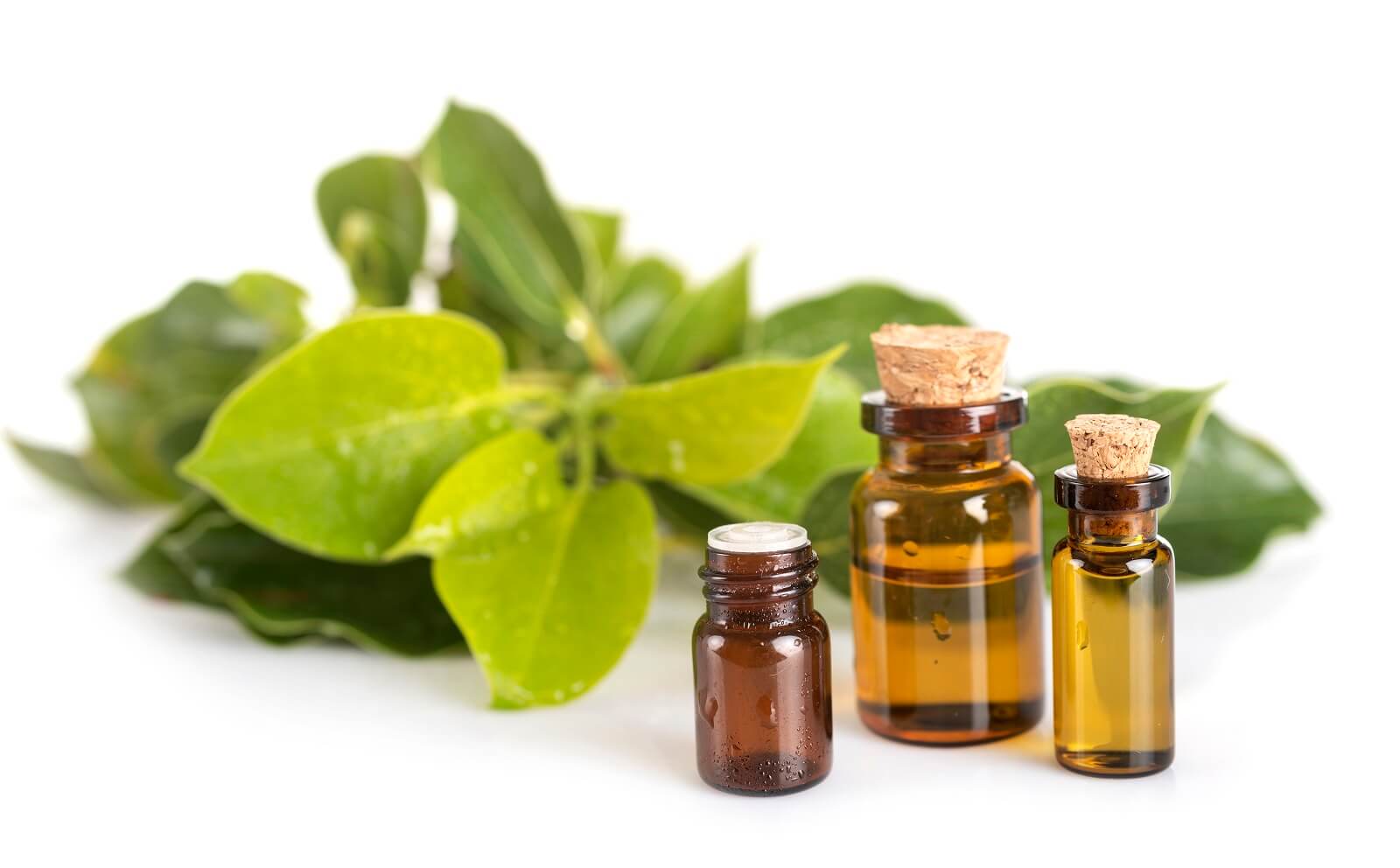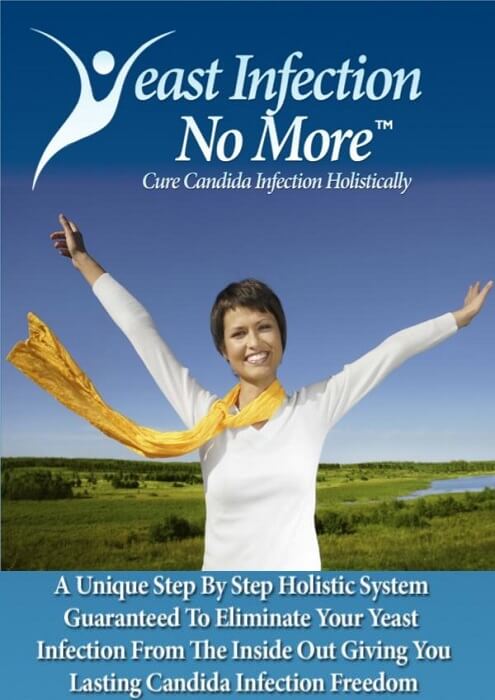See all "Itching" Section Topics

There are certainly many natural ways to relieve yeast infection itch. Two natural compounds you can try are capsaicin (the chemical in hot peppers) and camphor (derived from Cinnamomum camphora).
In addition to these two natural substances, there are exceptional essential oils that can also be used to control itching and fight a yeast infection simultaneously. These essential oils are peppermint (Mentha piperita) and chamomile (Matricaria recutita / Matricaria chamomilla).
The best of these natural remedies for yeast infection itch are probably peppermint oil, and chamomile. Candida Hub has an extensive article on using peppermint oil and chamomile, so these two oils will not be directly discussed in this article.
If you would like to read more about these essential oils, you can read through the article about using them for itching. You can also view individual articles about how these essential oils can be used to treat a yeast infection. The articles are linked directly below for your convenience.
- Essential Oils for Yeast Infection Itch
- Chamomile for Yeast Infection
- Peppermint Essential Oil for Yeast Infections
As you may have guessed, capsaicin might not be the most desirable choice. Since capsaicin can cause some irritation when you first use it (repeated use diminishes this irritation), it may not be what you want to use on a sensitive body area.
Additionally, there does not seem to be much, if any, research that indicates capsaicin fights Candida (Candida is the genus of fungi that causes all yeast infections). Yet, if you are struggling with severe itching; and you’d be willing to suffer through the initial irritation, capsaicin may be a great alternative remedy to employ.
Camphor is a natural itch reliever that also has some ability to stymie the development of Candida. Yet, camphor is toxic, and you should not ingest this natural chemical; use it only topically.
Although camphor is capable of relieving itch, it may not be the best choice to use on skin that has been damaged by a yeast infection. As a result, you may want to reserve using camphor until you have exhausted other natural remedies.
There are other, possibly lesser known herbs that may be helpful to relieve itch. This article will focus on the possibly more popular natural remedies: capsaicin and camphor.
For other, possibly lesser well known herbal therapies for itch, you may want to consider what the late Dr. James Duke, in his book The Green Pharmacy Herbal Handbook, suggests.
Dr. Duke states the following herbs can help relieve itching:
- Artichoke
- Basil
- Bayberry
- Butcher’s broom
- Camphor
- Chickweed
- Comfrey
- Evening primrose
- Fo-ti
- Horse chestnut
- Milk thistle
- Oats (you will probably want to avoid this, as oats can be a food source for Candida)
- Peppermint
- Skunk cabbage
- Tumeric
- Vervain
- Witch hazel
A 1/2 Day & Yeast is Gone!
Linda Allen suffered from yeast infections for years. Through researching natural medicine & Candida, she found an efficacious solution!
Linda is one expert you want on your side! Let her show you how to get rid of a superficial yeast infection in just 12 hours; AND, keep it gone!
A 60-day, 100% money back guarantee is provided.
Visit Official Site!Capsaicin for Natural Itch Relief

A study published in Seminars in Cutaneous Medicine and Surgery. [Vol. 30. No. 2., 2011], related that capsaicin may help relieve skin itchiness. According to the study, capsaicin acts on skin sensory nerves and triggers the release and depletion of certain chemicals, such as substance P (a neuropeptide—a small protein like molecule used by neurons to communicate with each other—substance P acts as a neurotransmitter and neuromodulator).
The depletion of these chemicals then limits the neural transmission from these nerve fibers over time. Consequently, capsaicin has been used to treat itching in various disorders.
According to the study, many reports and clinical studies have related successful treatment of symptoms in patients with the following disorders:
- Pruritus Ani — Excessive anal area itching.
- Uremic Pruritus — Chronic kidney disease associated itching.
- Aquagenic Pruritus — A skin disease causing severe itching from contact with water
- Prurigo Nodularis — A skin disease causing hard, itchy lumps.
- Brachioradial Pruritus — Abnormal sensations causing itching or burning around the outer forearm and occasionally in the shoulder and neck region.
- Notalgia Paresthetica — A sensory neuropathic (nerve disorder) condition causing itchiness in the upper to middle back.
This study also cites research done on 33 people with prurigo nodularis. In this cited study, capsaicin was applied topically 4 to 6 times a day. The use of capsaicin resulted in total remission of itch in all of the patients within 2 weeks.
The control of itching with topical capsaicin lasted for up to 10 months with continued use. However, itching returned shortly after the use of capsaicin was halted.
Another study, published in Dermatologic Therapy [16.2 (2003): 175-180], discusses capsaicin for relieving itching. The study states that capsaicin is used in dermatology; with its primary use being in postherpetic neuralgia. Postherpetic neuralgia is the most common problem caused by shingles; the chickenpox virus causes shingles.
The condition affects the skin and nerve fibers to cause burning sensations that happen long after the blisters and rashes from shingles disappear.
The author of the study relates that capsaicin has been useful for some people with intense itching problems. The study states that most of the literature on capsaicin focuses on painful, rather than itching, disorders.
Yet, it is further stated that in appropriate circumstances, capsaicin may be a useful therapeutic agent for itching problems.
Further research, published in the Journal of the American Academy of Dermatology [26.1 (1992): 91-94], analyzed capsaicin. The study looked at patients on dialysis and how capsaicin would work to relieve their itching problems.
Excessive itching is a serious problem for many patients undergoing long term dialysis treatments.
The study states that capsaicin depletes substance P in the peripheral sensory nerves (those nerves in the extremities that pick up sensations). Substance P is used by the nerves in the transmission of pain, and it also probably is used to relay information about itch sensations.
The research utilized a 0.025% capsaicin cream for the treatment of areas of itching. The study found that 8 out of 9 patients reported significant relief or total elimination of their itching during the course of the study.
Additionally 2 out of 5 patients in another trial reported total elimination of itching using capsaicin. The study also stated that no serious treatment related side effects occurred.
Another study discussed Capsaicin for its use as an itch relieving substance. The study was published in the journal Dermatology Nursing [16.4 (2004): 325]. According to this study, capsaicin is good for relieving itching associated with many conditions. This chemical is also particularly good for stubborn itching in a localized area.
The study relates that capsaicin is a component of red peppers or cayenne peppers. This substance works against itch as it desensitizes the nerve endings that cause the itching sensations. However, capsaicin may induce burning and stinging in the area you use it on. The irritation from capsaicin does diminish through repeated use. This may limit the uses for this herb.
The study reports it is good for people to use capsaicin 4 times each day to overcome the irritation. After the irritation subsides, you can reduce the number of times you use it during the day.
How to use Capsaicin
There are many creams that contain capsaicin. You should be able to find a cream containing this natural itch reliever on the internet or at a local specialty grocery store.
Simply follow the package directions. And, remember, you can experience some discomfort when you start using the cream. This discomfort should subside as the nerves in the skin become desensitized. You may want to use the cream several times a day.
Eliminate Bacterial Vaginosis & Vaginal Odor
Jennifer O’Brien is one prominent expert on BV that knows how to get rid of vaginal odor. BV is a common infection that you don’t have to put up with.
Jennifer will show you how to naturally eliminate vaginal odor in just 3 days.
A 60-day, 100% money back guarantee is provided.
Visit Official Site!Camphor for Itch Relief

A study, published in the journal Molecules [18.5 (2013): 5434-5454, states camphor is produced from the fragrant camphor tree (Cinnamomum camphora). The products created from this tree, such as the essential oil, have been desired since ancient times. Camphor has an extensive history of traditional use.
Camphor is traditionally created via the distillation of the wood of the camphor tree. Camphor is also a major component of the essential oils of several aromatic plants. Yet, camphor is very toxic; and, it can cause poisoning if ingested.
A study discussing camphor was published in Boletin Latinoamericano y del Caribe de Plantas Medicinales y Aromaticas [(2019): 1-15]. The study states that camphor is a terpene that is created by distilling the wood of the camphor tree.
The camphor is then used topically as an anti-itch and pain relieving agent. Camphor may affect itching sensations by desensitizing the Transient Receptor Potential channel (TRP). In the body, TRP channels may behave like microscopic thermometers; and may be used by animal cells to sense hot and cold. TRP channels are essential in sensing itches.
This research cites a study where patients used a vaporizing rub comprised of camphor, eucalyptus, and menthol. This vaporizing rub had an anti-itch effect in epidermolysis bullosa (a group of rare diseases that cause fragile, blistering skin). Another cited study reported that a mixture of camphor and menthol successfully treated induced itching in one patient.
In the book Natural Small Molecule Drugs from Plants, by Guan-Hua Du, camphor is discussed. According to this text, camphor was discussed in many ancient books of Chinese medicine. For a long time the Chinese produced camphor from the camphor tree, Yunnan camphor tree, and root bark of bodinier cinnamon. The book states camphor is used for skin diseases that cause itchy skin; and, the book lists other conditions this substance is used for.
Camphor has a variety of therapeutic uses; however, the toxicity of this substance limits the application. Overdoses of camphor can cause epilepsy, convulsions, vomiting, muscle spasms, irritability, drowsiness, and other symptoms.
The lethal dose for oral ingestion of camphor is 50mg to 500mg per kilogram of body weight. In general, ingesting camphor—like tea tree oil—is very dangerous. Ingesting about 4 grams of camphor can prove fatal.
Camphor May Assist against Candida infections
A study that looked into the ability of camphor to fight Candida albicans was published in the journal Frontiers in Microbiology [8 (2017): 1476]. The study sought to see how camphor would affect C. albicans biofilm formation and germ tube growth.
The study’s research indicated that camphor seemed to downregulate some hyphal growth and biofilm formation specific genes. The study concluded that camphor might be useful for controlling C. albicans infections.
According to a study from the Journal of Antimicrobial Chemotherapy [67.3 (2012): 618-621], Candida biofilm is an important issue. Biofilm is a thick, complex sludge that Candida creates in its life cycle. After Candida cells attach to a surface, they start to pile up and produce a sludge like covering.
This biofilm Candida creates, gives the yeast cells a great deal more resistance to environmental elements, that could jeopardize their growth—e.g., an antifungal agent. According to this study, Candida cells with biofilm on them had as much or more than 1024 times the resistance to synthetic antifungal drugs. Thus, stopping biofilm can help get rid of yeast infections.
How to use Camphor for Itch Relief
The renowned herbal medicine expert, the late Dr. James Duke, discusses how to use camphor in his book The Green Pharmacy Herbal Handbook. According to Dr. Duke, the toxicity of camphor (of course derived from Cinnamomum camphora) is too great; you should not use this natural remedy.
Dr. Duke does state that camphor does have therapeutic use as an itch reliever. And, if you choose to use an over the counter camphor product, make sure you follow the label directions to the letter. Do not apply camphor to burned or broken skin. Additionally, Dr. Duke recommends using it only externally, and only for a short duration of time.
Dr. Duke also suggests keeping camphor away from children. The fumes are toxic, and you should never apply camphor oil to a child’s face.
Clair Goodall: Author & Nature Lover
Clair Goodall is a bee-obsessed natural medicine convert from Minnesota. She is one expert you might want to know more about!
Clair will help you protect you and your family from toxic products and chemicals and help you discover solutions from nature.
Also, Clair’s book is backed by a 60-day, 100% money back guarantee
Visit Official Site!12 Hour, Natural Yeast Infection Cure

Yeast infections are arduous when they occur; yet, many women suffer from recurrent yeast infections. Many studies define recurrent yeast infections as approximately 4 or more episodes in a year’s time. Women who suffer from this recurrent condition often try a variety of products and remedies; yet, much of the time they do not find total relief.
One woman who suffered from recurrent yeast infections was Linda Allen. In Linda Allen’s situation, she had developed a systemic Candida problem. Not only was Candida causing recurrent infections, but was also destroying her health. Linda’s doctor did not know the exact cause of her unusual symptoms.
The doctor merely prescribed stronger antibiotics to combat her unusual health problems. These antibiotics helped her symptoms initially, but never worked long term. And, it seemed she could never get rid of her recurrent yeast infections.
Linda would struggle with her Candida problem for about 12 years before she discovered a way to mitigate, and eliminate, Candida from her body. The long journey to being free from Candida probably started when Linda visited a naturopathic practitioner.
The naturopath diagnosed linda with a systemic yeast infection. Although the naturopath did not provide Linda with a permanent solution for her problem, they did point her in the right direction.
After learning that Candida was the cause of her many health problems, Linda set out to learn about her condition; and, hopefully find a way to get free from its grasp. Linda engaged in a great deal of studying and research.
She would try many purported therapies, and even ask medical professionals for their input. It took a significant amount of hard work and diligence; yet, eventually Linda developed a natural solution to cure her systemic Candida.
After Linda developed her system, she spent about a year refining it before she tried it on herself. After starting her natural treatment plan, Linda found that her health was improving.
It was not long before Linda’s recurrent yeast infections stopped. And, as time progressed, Linda found that her health was fully restored. She even made an appointment with her doctor to run some tests on her body. The tests revealed that she was, in fact, again in good health.
Linda Allen went on to write an extensive book detailing her natural system to get rid of systemic Candida and regular yeast infections. Since her book was published years ago, Linda has helped over 100,000 people from around the world get free of their Candida related health problems.
Linda also includes a powerful, all-natural yeast infection treatment that gets rid of yeast infections in just 12 hours time. If you decide to try Linda’s book, you will see this exact system that can eliminate yeast infections in just half a day. This in itself can save a lot of money.
Linda’s book is published by a large online retailer, a subsidiary of the United States based firm Keynetics Incorporated. Linda’s publisher handles all her orders, and provides a secure, easy to understand purchasing system.
Additionally, Linda’s publisher also provides a 60 day, 100% money back guarantee on Linda’s book. If you decide to try Linda’s book, and you find it unsatisfactory for some reason, you can get a prompt refund of all your money. Linda’s publisher makes it easy to get a refund on their products; this helps ensure customer satisfaction.
For more information about Linda’s personal journey to good health, to see reviews of people who tried her natural system, or to find out more about Linda’s book; you can learn more at Linda Allen’s website.
Author: Mr. Geoff Kent

Geoff Kent is a natural medicine enthusiast who has been researching and writing about natural medicine since 2008. Geoff is primarily a web developer but also researches and authors written and video content about natural health. Geoff has a bachelor’s degree in Management Information Systems from the University of Northern Iowa.
Disclaimer
The information on this website is not a prescription for anyone. This information is for informational or educational purposes only, and is not a substitute for professional medical advice or consultations with healthcare professionals.
Affiliate Disclosure
Some of the links provided on this website are affiliate links. When a purchase is made through these links, Candida Hub earns money from commission. This helps to keep the website up and helpful to people for free. Thank you for any support!
Stay Up to Date
If you enjoyed this article, consider following / liking our Facebook page. This page is primarily utilized to alert followers of new articles that are put on Candida Hub. Candida related news is also discussed. While you are there, you can see what has been more recently added to Candida Hub.
Google Books
- Google Books — Dr. James Duke. “The Green Pharmacy Herbal Handbook: Your Everyday Reference to the Best Herbs for Healing.” Macmillan, 2002. ISBN: 9780312981518
- https://doi.org/10.3390/molecules18055434 — Chen, Weiyang, Ilze Vermaak, and Alvaro Viljoen. "Camphor—a fumigant during the black death and a coveted fragrant wood in ancient Egypt and Babylon—a review." Molecules [18.5 (2013): 5434-5454].
- https://doi.org/10.1016/j.sder.2011.04.008 — Elmariah, Sarina B., and Ethan A. Lerner. "Topical therapies for pruritus." Seminars in Cutaneous Medicine and Surgery. [Vol. 30. No. 2., 2011].
- https://doi.org/10.1046/j.1529-8019.2003.01626.x — Millikan, Larry E. "Alternative therapy in pruritus." Dermatologic Therapy [16.2 (2003): 175-180].
- https://doi.org/10.1016/0190-9622(92)70013-6 — Breneman, Debra L., et al. "Topical capsaicin for treatment of hemodialysis-related pruritus." Journal of the American Academy of Dermatology [26.1 (1992): 91-94].
- https://pubmed.ncbi.nlm.nih.gov/15471044/ — Yosipovitch, G., and J. L. Hundley. "Practical guidelines for relief of itch." Dermatology Nursing [16.4 (2004): 325].
- https://doi.org/10.35588/blacpma.19.18.1.01 — Mohajerani, Fahimeh, et al. "Medicinal plants as a source of future anti-pruritic drugs: A comprehensive review." Boletin Latinoamericano y del Caribe de Plantas Medicinales y Aromaticas [(2019): 1-15].
- Google Books — Guan-Hua Du. “Natural Small Molecule Drugs from Plants.” Springer [2018]. ISBN: 9789811080227
- https://doi.org/10.3389/fmicb.2017.01476 — Manoharan, Ranjith Kumar, Jin-Hyung Lee, and Jintae Lee. "Antibiofilm and antihyphal activities of cedar leaf essential oil, camphor, and fenchone derivatives against Candida albicans." Frontiers in Microbiology [8 (2017): 1476].
- https://doi.org/10.1093/jac/dkr512 — Khan, Mohd Sajjad Ahmad, and Iqbal Ahmad. "Antibiofilm activity of certain phytocompounds and their synergy with fluconazole against Candida albicans biofilms." Journal of Antimicrobial Chemotherapy [67.3 (2012): 618-621].








